After Eight Years, Royal Navy Welcomes Back Carrier-Based Jets
Fast fighter jets are once again flying from a Royal Navy aircraft carrier as the first F-35s have landed on the flight deck of HMS Queen Elizabeth.
Royal Navy Commander Nathan Gray and RAF Squadron Leader Andy Edgell were the first pilots to make history by landing their F-35 Lightning stealth jets on the flight deck of Britain's newest carrier.
Shortly afterwards, Commander Gray became the first pilot to take off using the ship's ski ramp. The flying operations mark the start of more than 500 take-offs and landings set to take place from the warship over the next 11 weeks.
Speaking shortly after the first landing on Tuesday 25 September 2018, Commander Gray said: "No words can explain how it felt to turn the corner at 500mph and see HMS Queen Elizabeth awaiting the arrival of her first F-35 jets. I feel incredibly privileged.
"For a naval aviator it is always a special moment when you spot the carrier in the distance, hidden within a grey expanse of ocean. HMS Queen Elizabeth is a floating city, home to hundreds of fellow sailors and Royal Marines, and it's been a particularly poignant day."
Able to embark up to 24 of the supersonic jets, HMS Queen Elizabeth provides the Royal Navy with a capability possessed by few others.
The jets will be put through their paces over the coming weeks in a range of sea and weather conditions. Having then completed the trials, which are taking place off the east coast of the United States, the aircraft carrier is expected to visit New York.
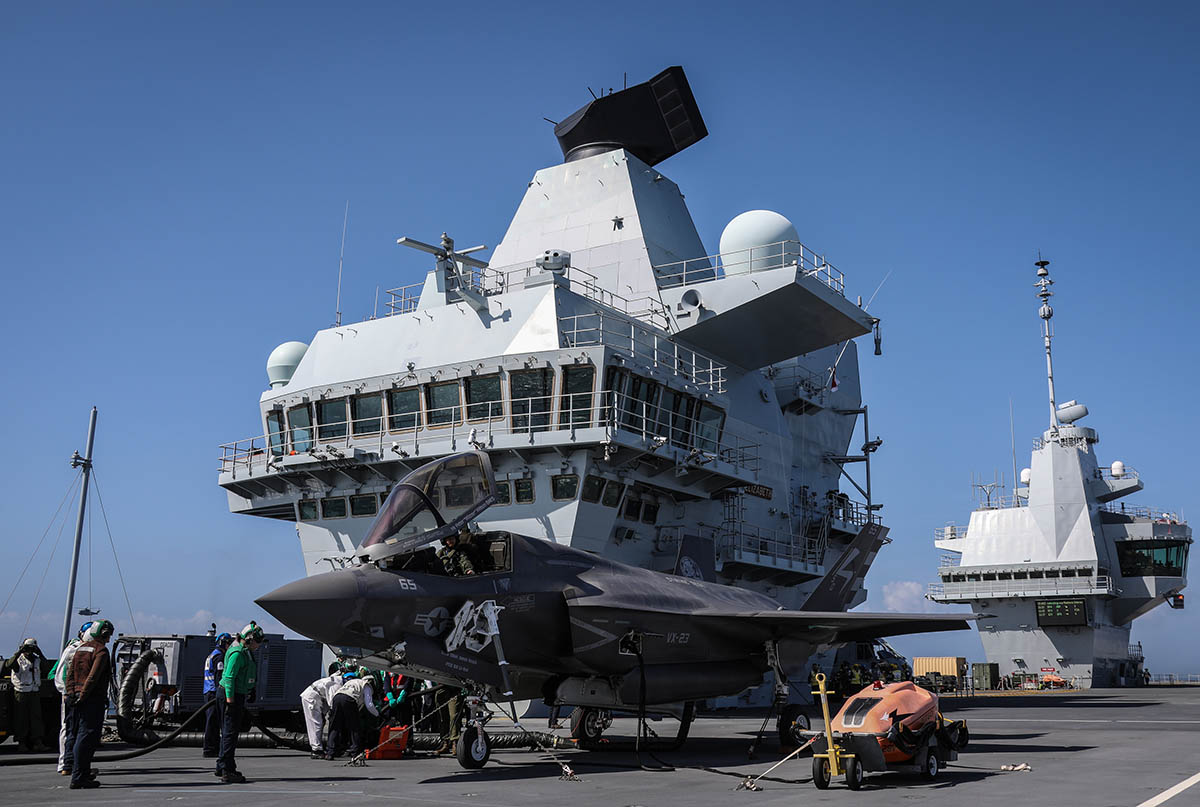
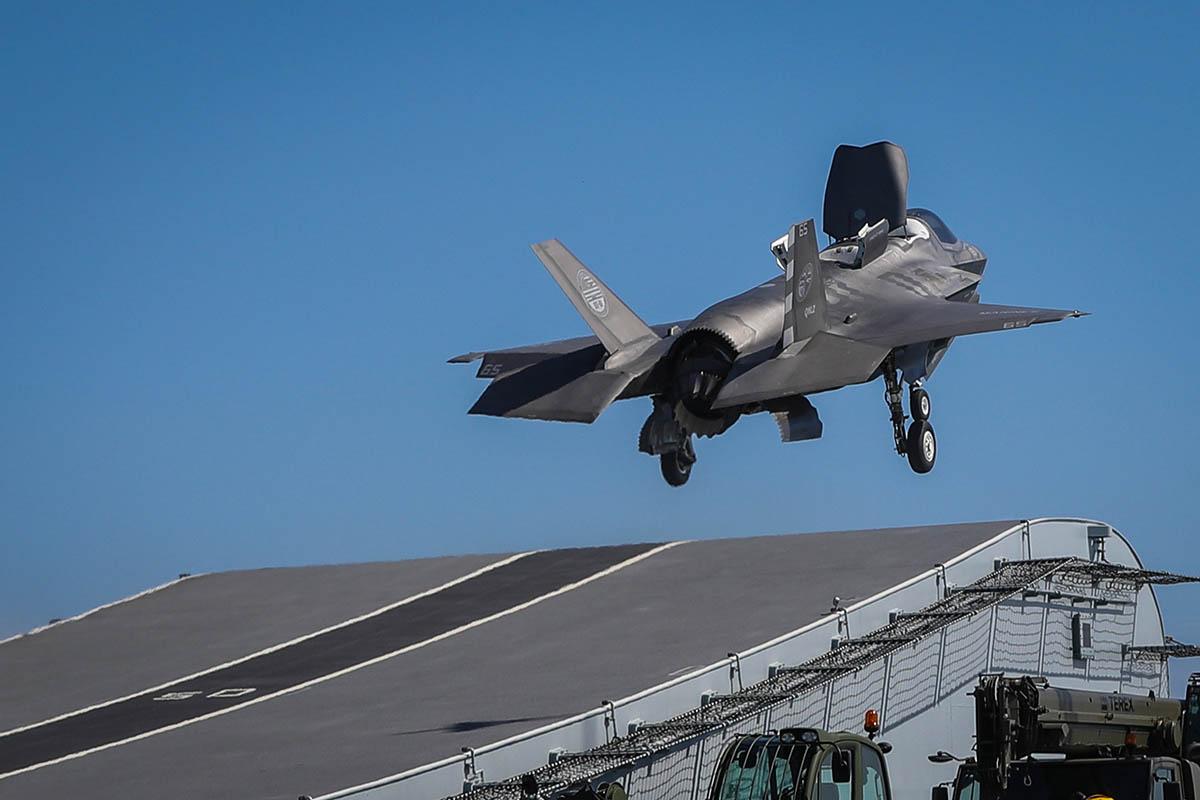
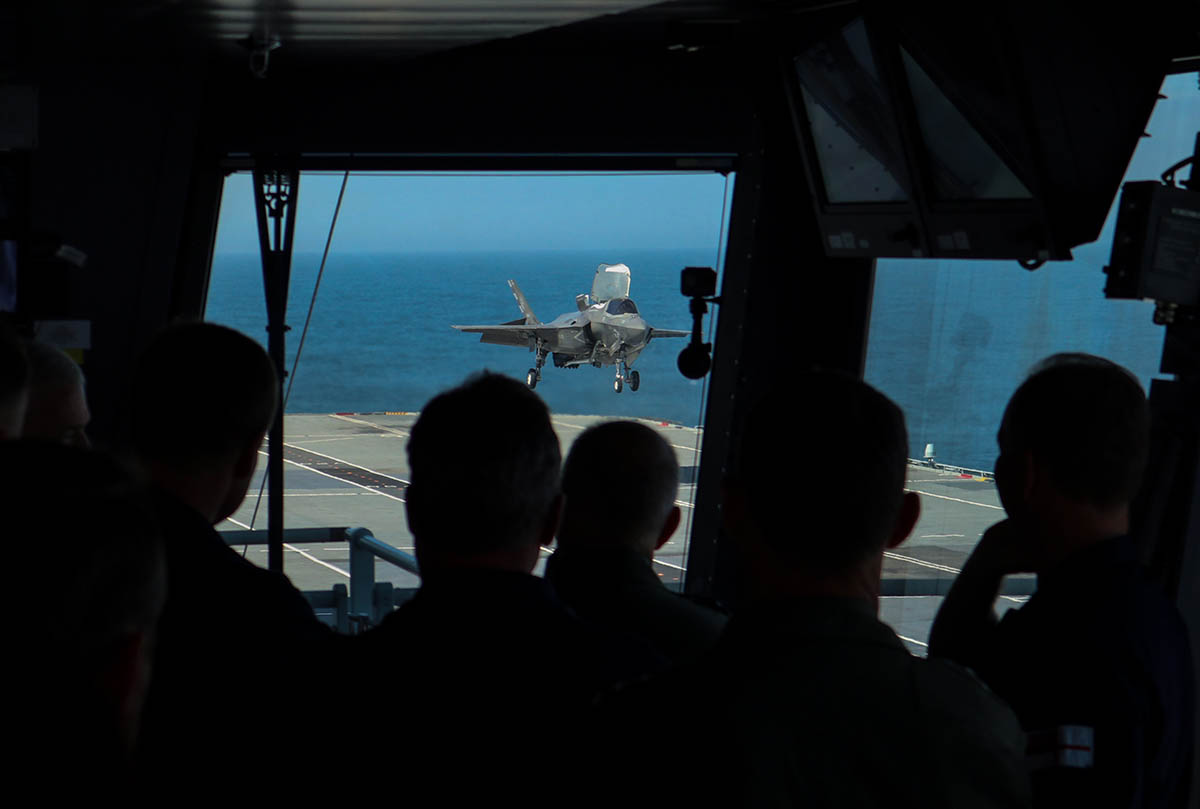
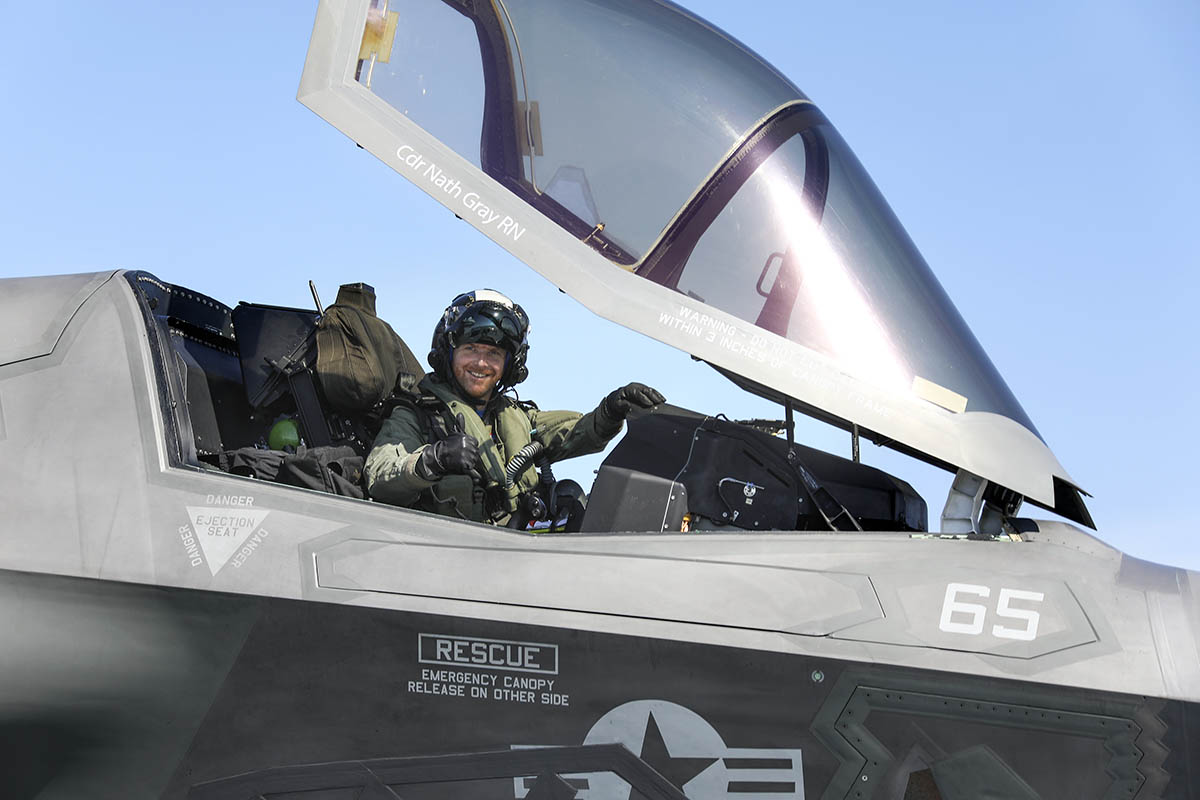
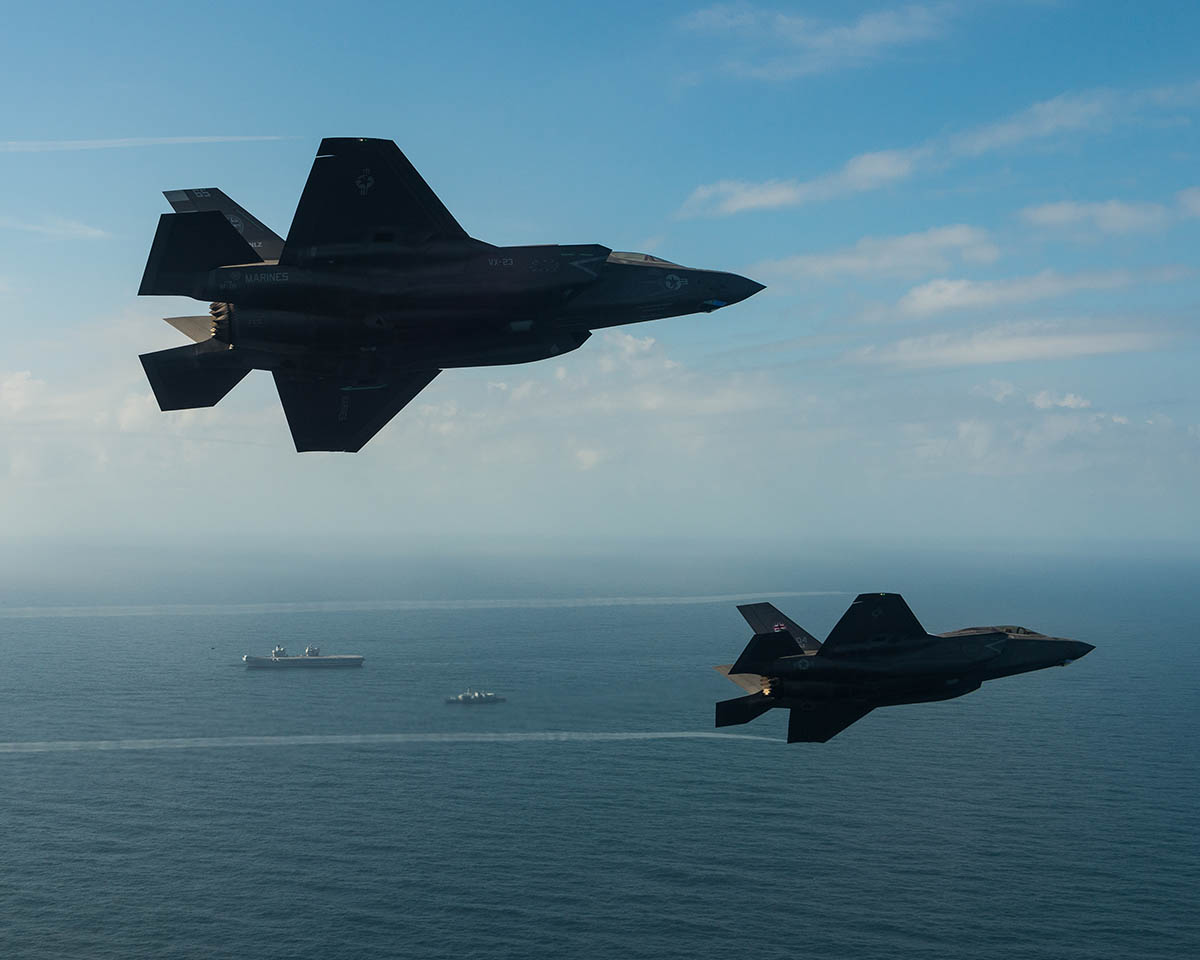
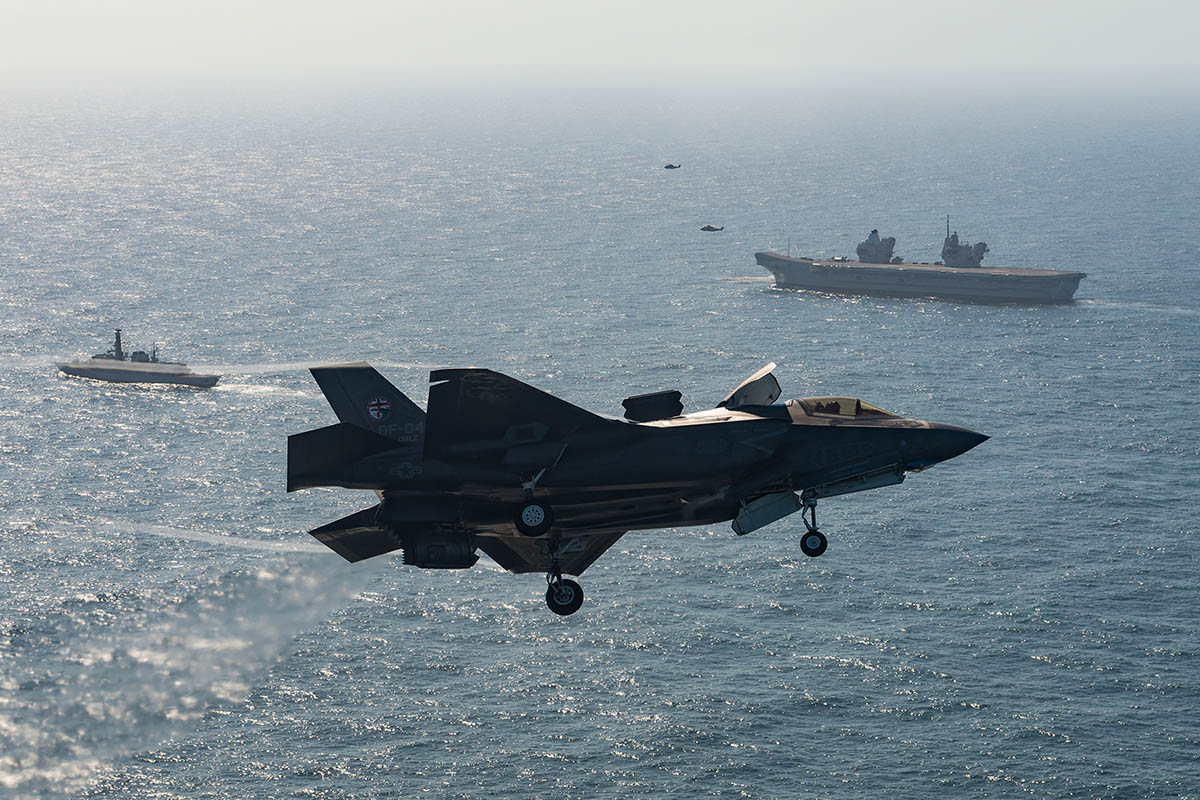
"I am quite emotional to be here in HMS Queen Elizabeth seeing the return of fixed-wing aviation, having been the captain of the aircraft carrier which launched the last Harrier at sea nearly eight years ago," said Commanding Officer Captain Jerry Kyd. "The regeneration of big deck carriers able to operate globally, as we are proving here on this deployment, is a major step forward for the United Kingdom’s defence and our ability to match the increasing pace of our adversaries. The first touch-downs of these impressive stealth jets shows how the United Kingdom will continue to be world leaders at sea for generations to come."
HMS Queen Elizabeth left her home port of Portsmouth in August, crossing the Atlantic to conduct the flying trials as well as training with the US Navy.
The deployment has also provided an opportunity for the UK’s Carrier Strike Group headquarters team to sharpen their skills in a task group, having been joined on the deployment by Type 23 frigate HMS Monmouth, and a US Arleigh Burke-class destroyer the USS Lassen. More than 1,400 sailors, flight crew and Royal Marines have been working on board the carrier during her deployment.
The Royal Navy's two new aircraft carriers, HMS Queen Elizabeth and HMS Prince of Wales, will project British military power across the globe for the next half a century. Construction work continues at a pace on board HMS Prince of Wales, the second aircraft carrier in the class, which nears completion at the Rosyth shipbuilding yard.
They will be used to provide humanitarian assistance and disaster relief, strengthen defense relationships with allies, and support British armed forces deployed around the world.
HMS Queen Elizabeth is on track to deploy on global operations from 2021. Meanwhile, the UK has now taken delivery of 16 out of a planned 138 F-35 jets as part of its world-leading fleet of military aircraft for use by the Royal Navy and Royal Air Force.
This article appears courtesy of Royal Navy News and may be found in its full, original form here.
The opinions expressed herein are the author's and not necessarily those of The Maritime Executive.
